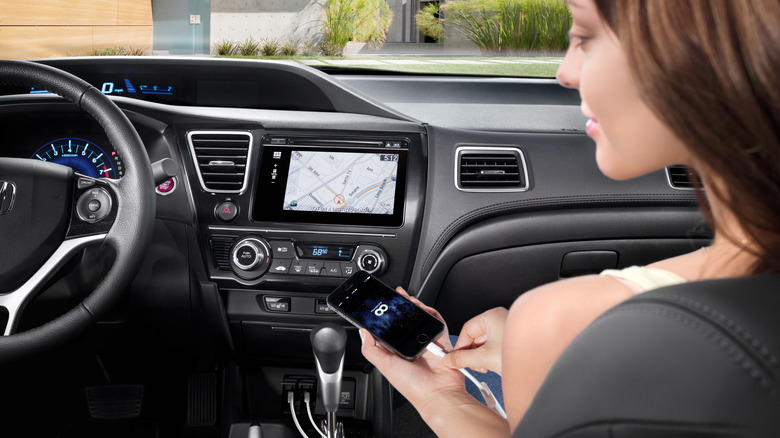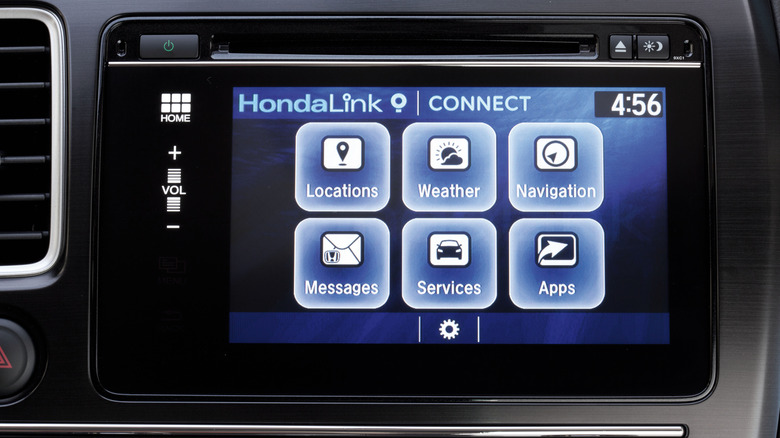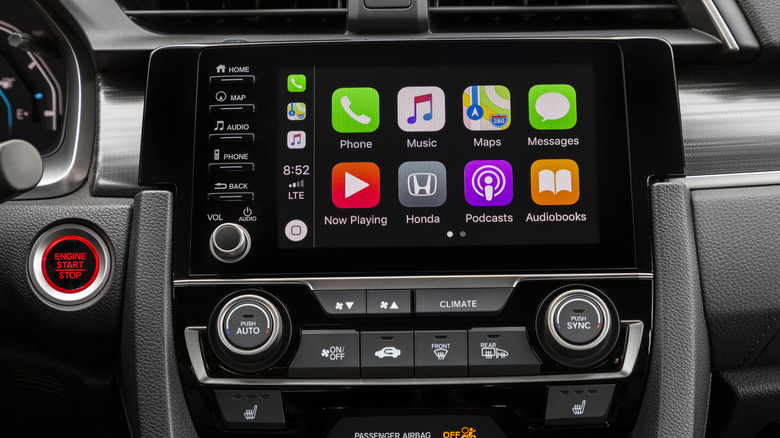Why Do Some Honda Cars Have HDMI Ports?
As cars have become more integrated with fast-moving consumer technology, particularly when it comes to infotainment systems and the controls that operate them, there are some fairly modern cars out there with some unusually strange and often obsolete tech in their cabins. At their worst, these clunky or unintuitive infotainment systems can completely sour the experience of driving what's otherwise a great car.
The trackpad interface that Lexus had for many years before dumping it, is a big one that comes to mind. But there are other, less-intrusive, but still odd and outdated features you'll find in certain cars, including an HDMI port that was available on certain Honda models for a short period in the 2010s.
Why exactly would a car need an HDMI port? It wasn't so you could plug in your PlayStation or your Xbox for a gaming session while stopped in traffic. It was actually a pre-Apple CarPlay and pre-Android Auto way that Honda attempted to mirror a smartphone and its features on a car's infotainment screen, and it was met with mixed results at best.
What is HondaLink?
By the early 2010s, most vehicles had already integrated with phones to varying degrees. Hands-free, Bluetooth phone operation was common, as was wireless Bluetooth audio streaming and USB-connected audio. But as smartphone use exploded, and car stereos and analog controls morphed into "infotainment" systems, Honda attempted to integrate smartphone functionality onto the car's screen via an HDMI port.
Debuting first on the 2014 model year Civic, followed by the 2015 Honda Fit, the 7-inch HondaLink screen included an HDMI input, which, when combined with a specific HondaLink application, could run phone-powered navigation on the car's screen. It wasn't necessarily easy, though. Not only did you need to buy a special Honda cable that split from your phone's port into separate USB and HDMI outputs, you also needed to purchase a HondaLink navigation app that would launch on your phone through a HondaLink launcher app.
With everything connected and running right, you'd have a setup that wasn't much different from the built-in navigation system available on higher-end models. Additionally, you could also use a standard phone-to-HDMI cable to directly mirror your smartphone's display on the car's screen, though not with any touchscreen capability. That meant you still had to look down at and touch your phone to do anything. And for safety reasons, the screen would also lock while the car was in gear.
Enter CarPlay and Android Auto
It was clear, even at the time of its release, that Honda's HDMI-based smartphone mirroring system wasn't long for this world. Our review of the 2015 Honda Fit, revealed the HDMI-based system and its associated apps to be half-baked and clunky in operation. Meanwhile, Apple's own CarPlay debuted in the spring of 2014, with Android Auto following shortly after. By the 2016 model year, the Honda Accord and Civic were both available with USB-based CarPlay and Android Auto, free of charge and without needing additional ports, cables or adapters. A system like HondaLink was no longer necessary.
These days, nearly every new car on the market is equipped with Apple CarPlay and Android Auto, usually connected wirelessly. And, looking back on it, the short-lived HondaLink era is just another example of how fast in-car tech and infotainment have advanced over the years. Despite being fairly advanced technology just a decade ago, an HDMI-based smartphone mirroring system that required a special adapter cable and specific manufacturer-developed apps seems archaic today.


